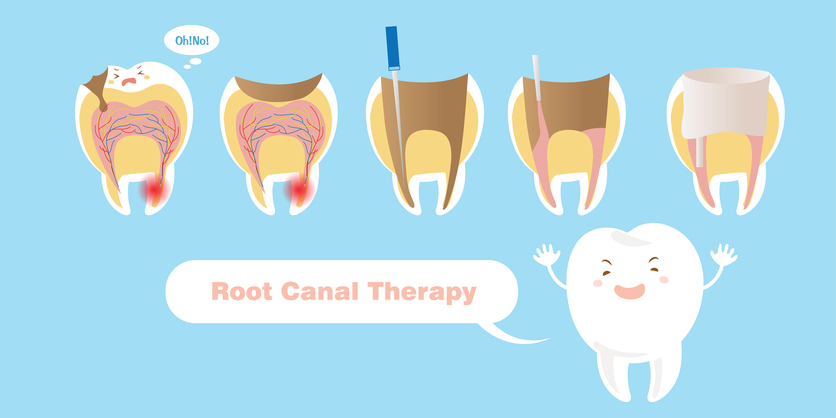Root Canal Therapy In Burnaby is a common dental procedure that is used to repair and save a severely damaged or infected tooth. It is a lifesaver for many patients who are suffering from dental pain due to an infection, decay, or injury. Root canal therapy has been known to provide patients with a pain-free and successful outcome when done properly. In this blog, we will uncover the first step in painless root canal therapy.
What is Root Canal Therapy In Burnaby?
Root canal therapy, also known as endodontic therapy, is a dental procedure that is used to treat an infection or decay that has reached the innermost layer of the tooth, known as the pulp. The pulp is a soft tissue located inside the tooth that contains the blood vessels and nerves. During root canal therapy, the pulp is removed and the inside of the tooth is cleaned and sealed. This procedure is used to prevent further damage and save the tooth from extraction.
Root canal therapy is a common dental procedure that is often used to restore a damaged or infected tooth. It can be used to treat a variety of conditions, including an abscessed tooth, an infected tooth, a cracked tooth, trauma to the tooth, or a deep cavity.

The most common signs that may indicate the need for root canal therapy include severe tooth pain, sensitivity to hot and cold temperatures, swelling of the gums, darkening of the tooth, and tenderness of the gums. If any of these symptoms are present, it is important to seek the advice of a qualified dentist as soon as possible.
Understanding the root canal process
Root canal therapy is an effective way to save a damaged or infected tooth. The process involves three main steps: cleaning and disinfecting the tooth, filling the root canals, and sealing the tooth.
The first step of root canal therapy is to clean and disinfect the tooth. During this step, the dentist will use special instruments to access and remove the infected tissue from the root canals. The canals are then cleaned with an antiseptic solution to kill any remaining bacteria.
Once the infected tissue has been removed, the dentist will use special instruments to shape the root canals. This is done to ensure that the filling material can be properly placed in the canals.

The second step of root canal therapy is to fill the root canals with a special material, such as gutta-percha. This material helps to seal the root canals and prevent further infection.
The third and final step of root canal therapy is to seal the tooth. This is done by placing a crown, or artificial tooth, over the treated tooth. The crown helps to protect the tooth and prevent further infection.
It is important to note that root canal therapy is not a one-time procedure. In some cases, a patient may require multiple visits to the dentist to complete the root canal therapy process.
Steps of root canal therapy
Root canal therapy is a complex procedure that requires the expertise of a qualified dentist. The process typically involves four main steps: diagnosis, preparation, filling, and sealing.
The first step of root canal therapy is diagnosis. During this step, the dentist will use special imaging tests to diagnose the condition of the tooth. This step is important to ensure that root canal therapy is the best option for the patient.

The second step of root canal therapy is preparation. During this step, the dentist will use special instruments to access the root canals and remove the infected tissue. The canals are then cleaned and shaped to ensure that the filling material can be properly placed in the canals.
The third step of root canal therapy is filling. During this step, the dentist will use a special material, such as gutta-percha, to fill the root canals. This material helps to seal the root canals and prevent further infection.
The fourth and final step of root canal therapy is sealing. This is done by placing a crown, or artificial tooth, over the treated tooth. The crown helps to protect the tooth and prevent further infection.
Prevention and maintenance
Although root canal therapy can be an effective way to save a damaged or infected tooth, it is important to take steps to prevent the need for this procedure in the first place. The best way to prevent root canal therapy is to practice good oral hygiene. This includes brushing and flossing twice a day, as well as visiting your dentist for regular checkups and cleanings.
It is also important to be aware of the signs and symptoms of an infection or decay. If any of these symptoms are present, it is important to seek the advice of a qualified dentist as soon as possible.

Root canal therapy can be a life-saving procedure for many patients who are suffering from dental pain due to an infection, decay, or injury. It is important to understand the process of root canal therapy and take steps to prevent the need for this procedure. If you think you may need root canal therapy, it is important to seek the advice of a qualified dentist as soon as possible. Take Appointment For Root Canal Therapy In Burnaby!
Root canal therapy is a complex dental procedure that requires the expertise of a qualified dentist. By understanding the steps of root canal therapy, patients can be prepared for the process and ensure a successful and pain-free outcome. By taking steps to prevent the need for root canal therapy and seeking the advice of a qualified dentist at the first sign of an infection or decay, patients can ensure that their teeth will be healthy and pain-free.






